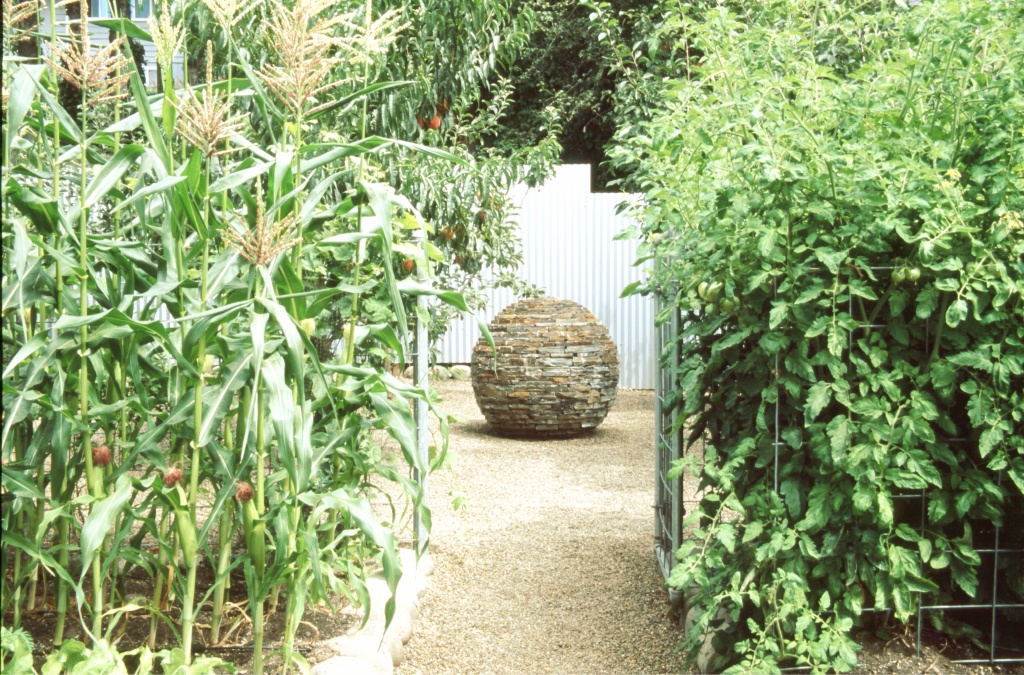Hi there! We've been working long hours in the field, but we're hoping the next few weeks should bring more pictures and ideas to the journal. With the hot weather (again!) this week, it seems like a great time to share a few observations about reducing our summer irrigation. We've irrigated less frequently this summer than in previous years. This summer, our irrigation system runs every 6 days most of the time, with an extra cycle on the weeks when temps are above 95. While some of our plants show signs of stress, quite a few seem to tolerate dryer conditions quite well. Below are a few notes from our experience that may help you in planning or expanding your lower-water-use garden. We've linked to images for a few of the plants worth noting.
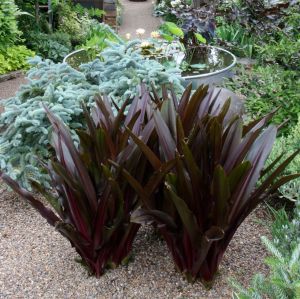
Among the toughest sun perennials are some plants with tuberous or bulbing roots, like our Eucomis 'Sparkling Burgundy' (pictured at left), lillies, and dahlias. I'm sure they would all suffer with no water, but it seems like they could handle even less frequent irrigation.... The Kniphofias (torch lillies) are beautiful, too, and our Molinia 'variegata' looks so terrific that it is our new favorite ornamental grass.
Among larger plants, most of our conifers have held up well, although a few, like our Picea glauca 'Pendula' burned during the hottest weather. On the whole, "shrubby" plants like Cotinus, Sambucus, and Rhododendron have held up well, although the gold foliaged shrubs look a little scalded. The Physocarpus 'Diablo' may be one of the bigger surprises, as it wilts readily when first planted, but seems to handle much drier conditions once established.
In the shade garden, many of our ferns seem hardly to have missed a beat. As a very loose rule of thumb, the ferns with glossier, sturdier looking fronds seem to tolerate the dryer conditions better than the more delicate ferns. The Helleborus hybrids are holding up quite well. They seem to droop a little towards the end of the dry period, but perk up with each watering. Two standout drought-tolerant shade plants are our Bletilla striata 'Alba' - a lovely terrestrial orchid with a long, pin-striped leaf - and the white variegated Eleutherococcus (used to be Acanthopanax) that we got from Roger Gossler. It seems like they could not care less!
We haven't lost many plants, but quite a few aren't as attractive as they would be with more water. Heucheras, astrantias, and rodgersias all show signs of drought stress, but we expect them to bounce back over the winter. If we decide to further reduce our irrigation frequency next year, a few of them may have to find new homes....
For what it's worth, there are many gardens that use much less water than ours. We didn't set out to create a drought tolerant garden (what we *did* set out to create is another post entirely), but we hope that our experience with lowering water use in our little space may help a few people plan or edit their own gardens to achieve a graceful balance of resource-consciousness and beauty.
Hope your gardens are faring well!

 Thanks so much to everyone who organized and attended the Music in the Garden tour. We were delighted to share our space with so many lovely people, and we hope you had as much fun as we did.
Thanks so much to everyone who organized and attended the Music in the Garden tour. We were delighted to share our space with so many lovely people, and we hope you had as much fun as we did.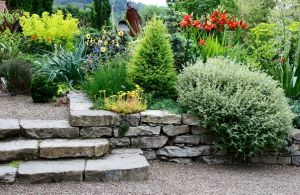 Garden photographers live for forecasts like tomorrow's - mostly cloudy with a high of 73. The plants will love the comfortable, but not-too-warm temperatures (us too!), and gardens look their best under a little cloud cover. It's shaping up to be a
Garden photographers live for forecasts like tomorrow's - mostly cloudy with a high of 73. The plants will love the comfortable, but not-too-warm temperatures (us too!), and gardens look their best under a little cloud cover. It's shaping up to be a 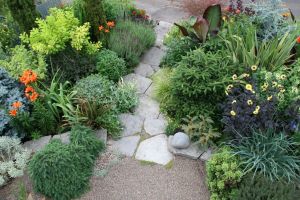 With the
With the 

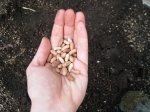 I love planting our veggie garden. It's hard to believe that tiny seeds and transplants will produce so much beautiful food! Two photos from this morning and one from last fall.
I love planting our veggie garden. It's hard to believe that tiny seeds and transplants will produce so much beautiful food! Two photos from this morning and one from last fall. 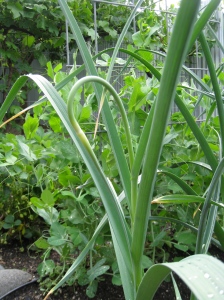

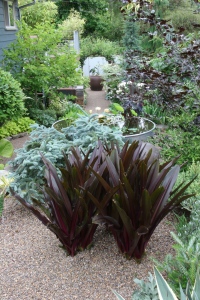 Please join us for the Eugene Symphony Guild's Music in the Garden tour on Sunday, June 14, 10am - 4pm. The tour will feature seven terrific Eugene Gardens,
Please join us for the Eugene Symphony Guild's Music in the Garden tour on Sunday, June 14, 10am - 4pm. The tour will feature seven terrific Eugene Gardens, 
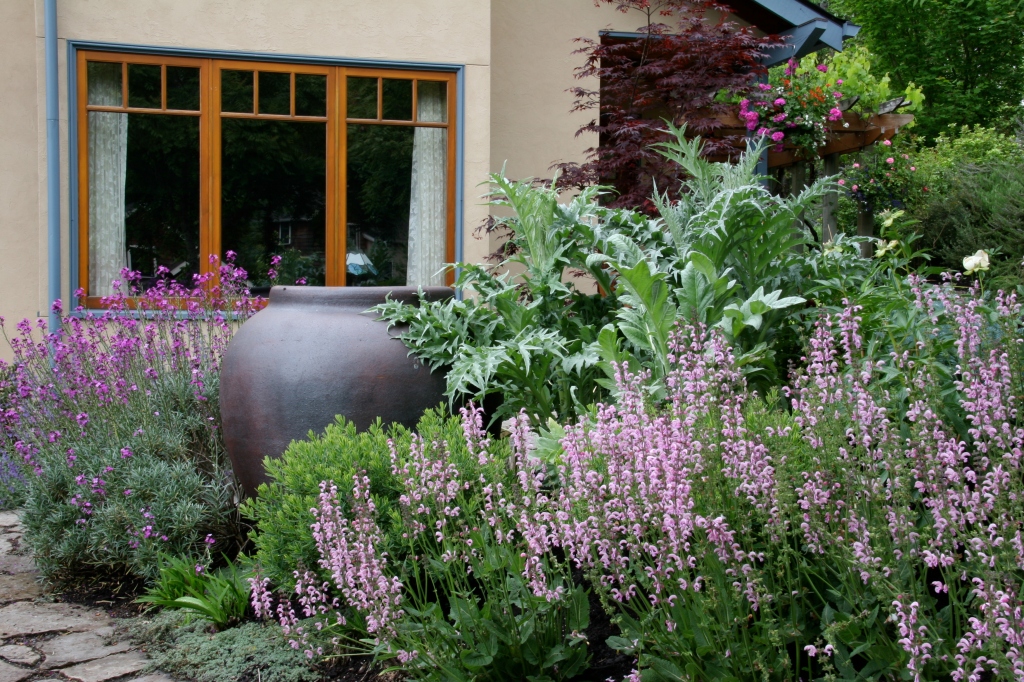
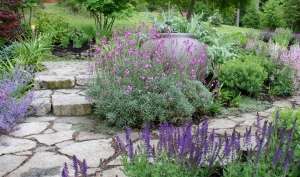

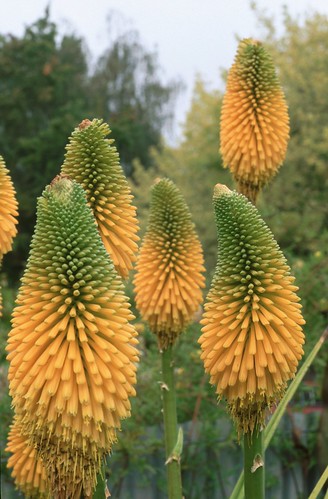
 Just a quick note to announce the photography exhibition of our friend,
Just a quick note to announce the photography exhibition of our friend, 